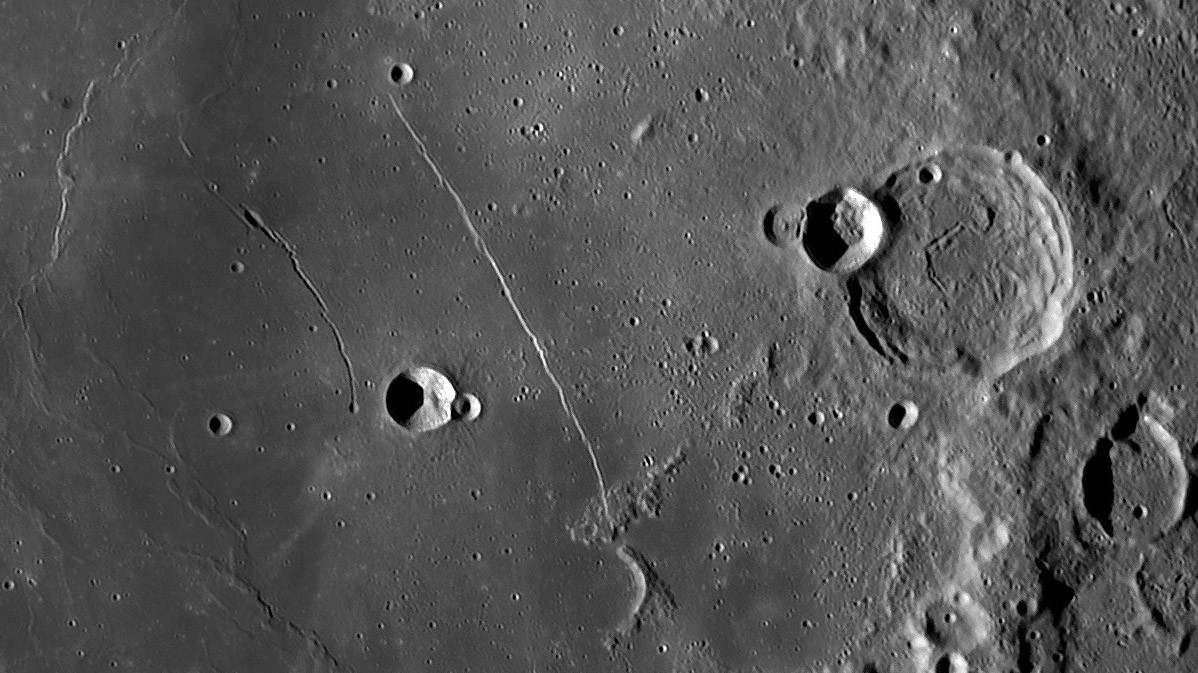November 3, 2018
Succession
Originally published August 20, 2009

image by Christian Arsidi, near Paris, France
For decades, French astrophotographers and imagers have been capturing superb high resolution views of the Moon, and Christian continues that tradition. Ignore the linear features in the middle and concentrate on the interiors of the pairs of overlapping craters. Near the center of the image is Birt and its rim- cutting companion Birt A. The interaction between these two rims is complex. The rim of A indents Birt's rim, and a mound of debris just east (right) of Birt's interior shadow is probably unconsolidated debris that was pushed westward, and hence downslope, when A formed. There was also pushback on A that moved a large piece of its rim partway into its crater - you can see that mound in Christian's image. Elger, the author of the classic 1895 book, The Moon, reported the the the wall ... at the point of junction [of the two rims] is clearly very low, so that under oblique light the two interiors appear to communicate by a narrow pass or neck filled with shadow. A more complex interaction of rims is seen for Thebit, Thebit A and Thebit L, the small crater on A's rim. A cleanly slices through Thebit's rim, demonstrating that it (A) is younger. The relation between A and L is less certain. Two elongate masses were dislodged from the rim crest of L and moved partway down the crater wall. A higher Sun Lunar Orbiter image shows that the same thing happened within A, a triangular mass of material slid to its floor. I think that A is younger than L - do you agree? The evidence is that the rim of A is brighter and sharper, suggesting that it has suffered less erosion.
Chuck Wood
When I finished this LPOD I discovered that I had written a previous one on this same topic of rim interactions. When I start repeating myself maybe its time to stop! But maybe I can go on until I get it right, for in the 2006 LPOD I guessed that L might be younger!
Note added August 22 A previous LPOD with very low illumination angle shows the continuation of shadow that Elger referred to.
Daily French Lesson
12 août 2009 (~3-4 heurs UT) avec mon OTA Celestron 14, sur monture Takahashi EM 400, Barlow 2x, caméra Skynyx 2-1M; traitement avec Iris.
Related Links
Rükl plate 54
Yesterday's LPOD: A Rille That Doesn't Know What To Do with Itself
Tomorrow's LPOD: Modes of Devastation
COMMENTS?
Register, Log in, and join in the comments.



